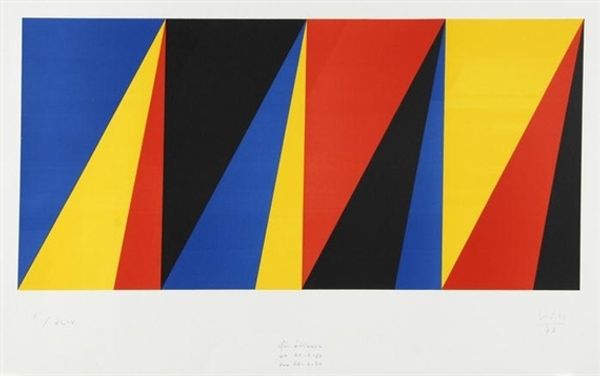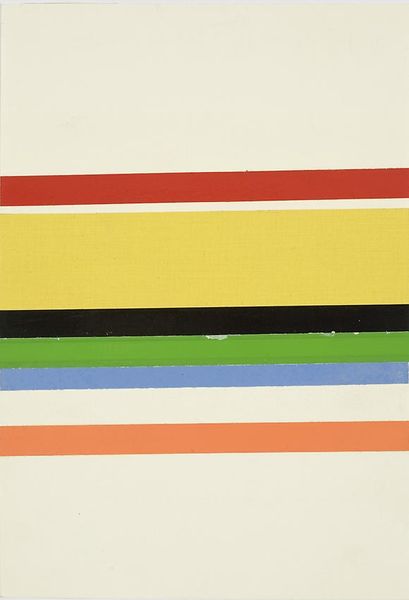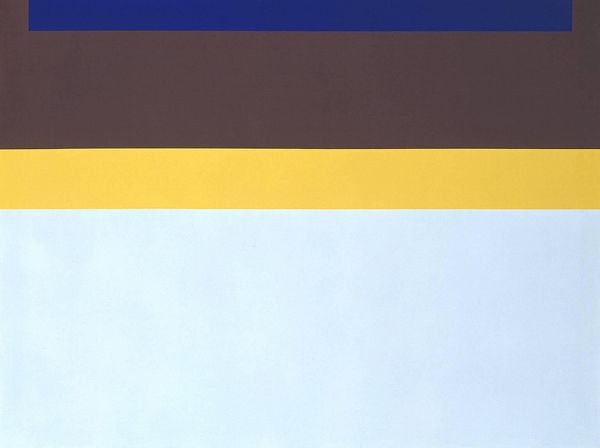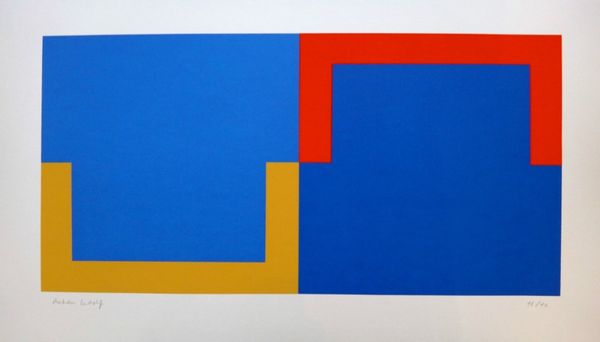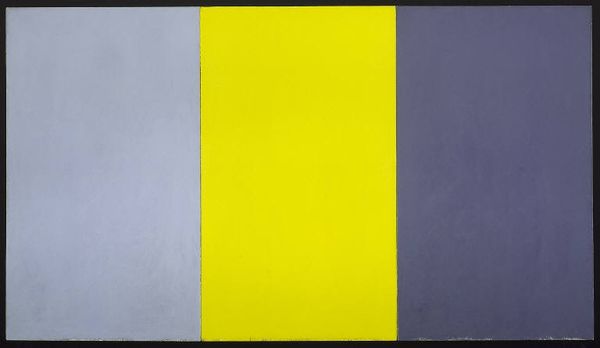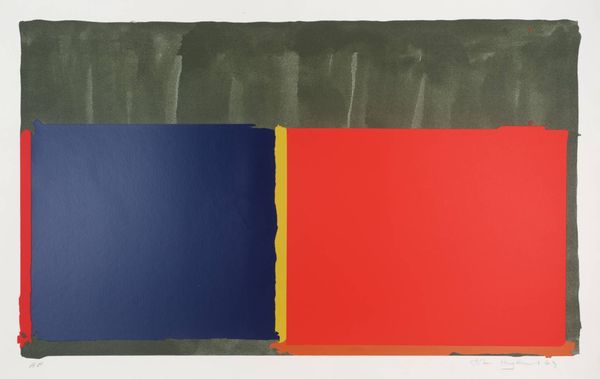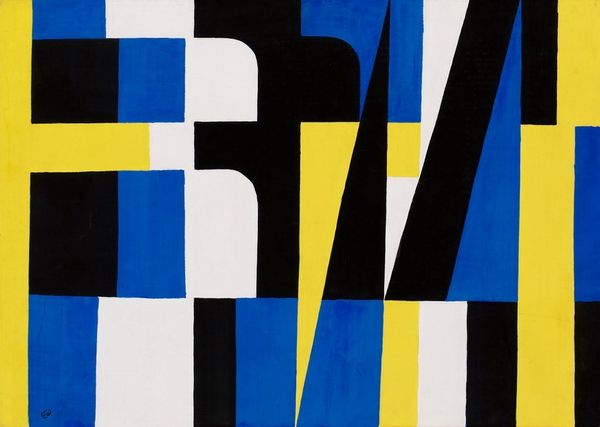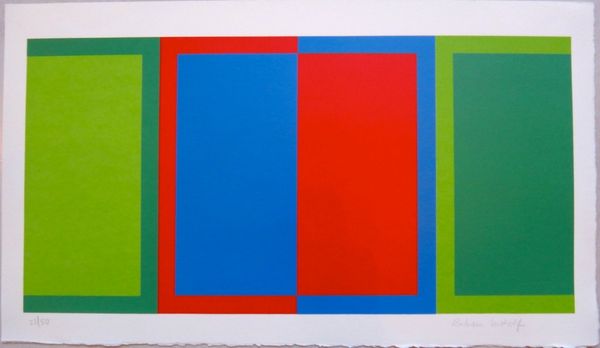
acrylic-paint
#
abstract-expressionism
#
pop art
#
acrylic-paint
#
form
#
tonal
#
rectangle
#
geometric-abstraction
#
abstraction
#
line
#
hard-edge-painting
Copyright: John McLaughlin,Fair Use
Curator: John McLaughlin’s "Number 13" from 1961. It's an acrylic on board piece, and a very compelling example of Hard-edge painting. Editor: Striking. The composition, with its crisp lines and blocky fields of yellow, black, and blue is so immediate, so arresting. It commands attention. Curator: Indeed. McLaughlin developed his signature style after immersing himself in Eastern philosophy and the notion of stripping art down to its essence. "Number 13," with its precisely rendered rectangles, embodies this pursuit of pure, non-objective form. This reflects the pervasive influence of Zen philosophy and Japanese aesthetics on mid-century American art and design. Editor: The colors, too, are crucial. They're so bold and assertive. Yellow vibrates against the stark black and assertive blue. And how each block ends perfectly aligning in one top, and one bottom line across. Semiotically, these solid rectangles become powerful symbols. Is it reaching to say they represent figures or states of being? Curator: That interpretation has definitely surfaced. And while the reading of geometric shapes as symbols gained momentum with Pop Art in the decade that followed, McLaughlin wanted his work to prompt viewers toward self-reflection. To encounter the pure aesthetic without preconceived notions and achieve, through it, a kind of mental stillness. So, if you perceive 'figures,' then that might reveal more about your current disposition than anything. Editor: That resonates. Because of the cultural moment of its making. It strikes me as an antidote to the chaos and anxiety of the Cold War, a minimalist sanctuary for the eye. It's fascinating how art can act as both a mirror to society and a retreat from it. The formal, pristine elements are suggestive of how one might compose themselves when pressured to fold into something more complex than oneself. Curator: Exactly. It’s a powerful reminder of art's potential to shape not just visual culture but our individual experience within it. Editor: Precisely. I hadn’t considered this particular sociopolitical aspect when only accounting for composition, scale, and tone. Thank you.
Comments
No comments
Be the first to comment and join the conversation on the ultimate creative platform.




